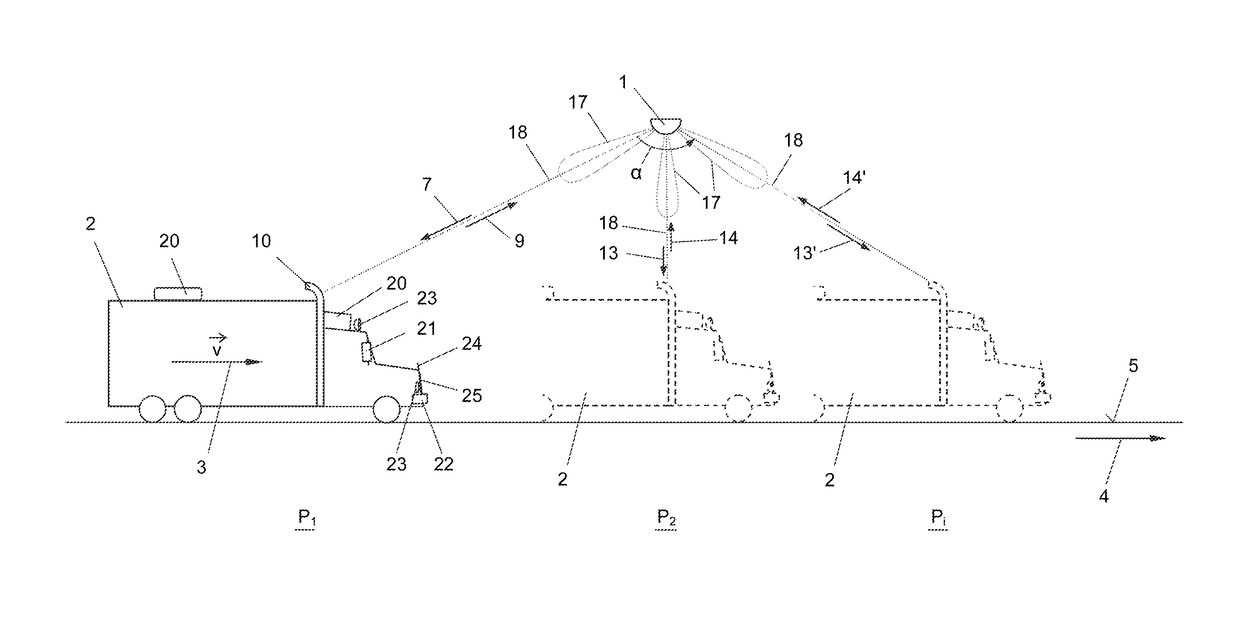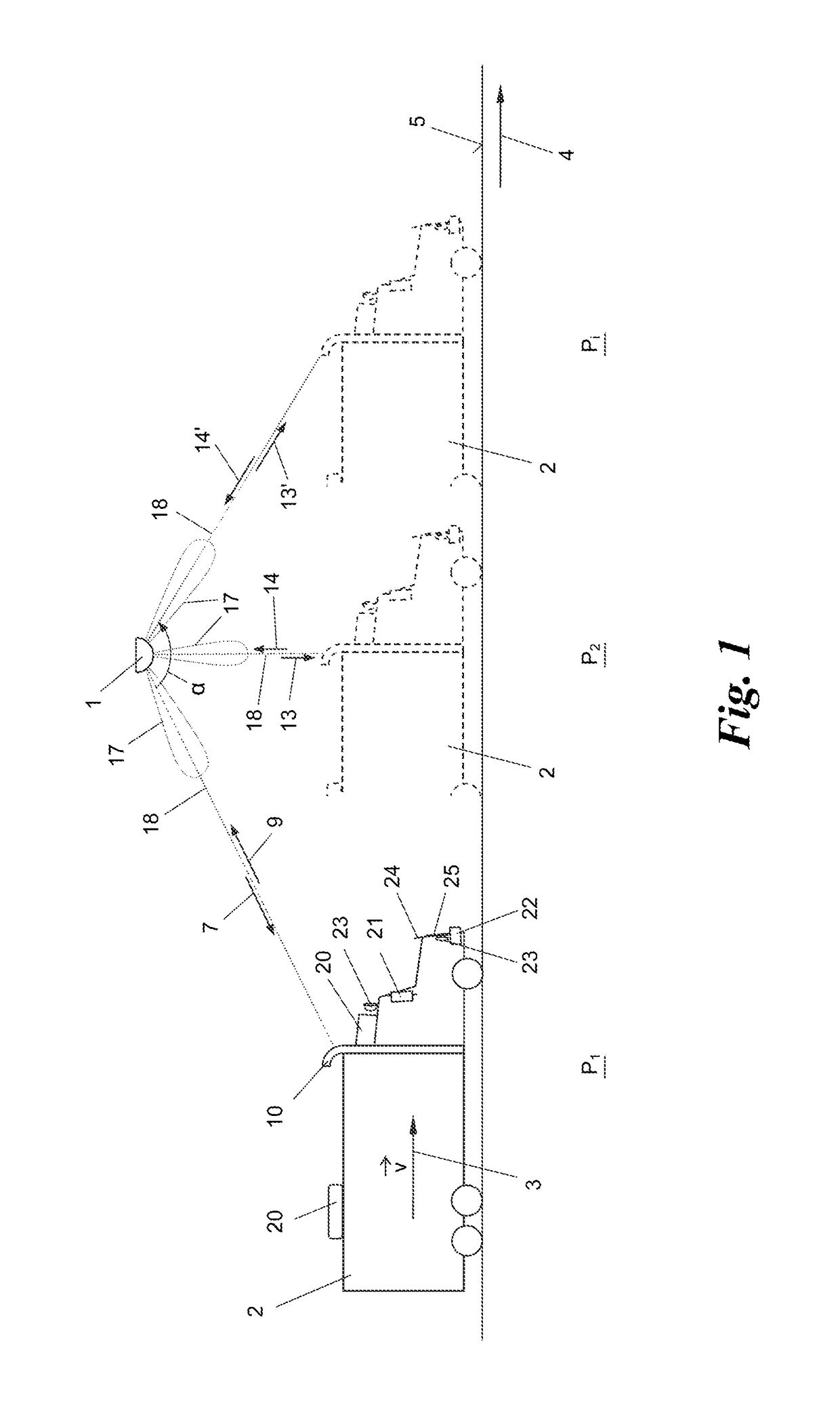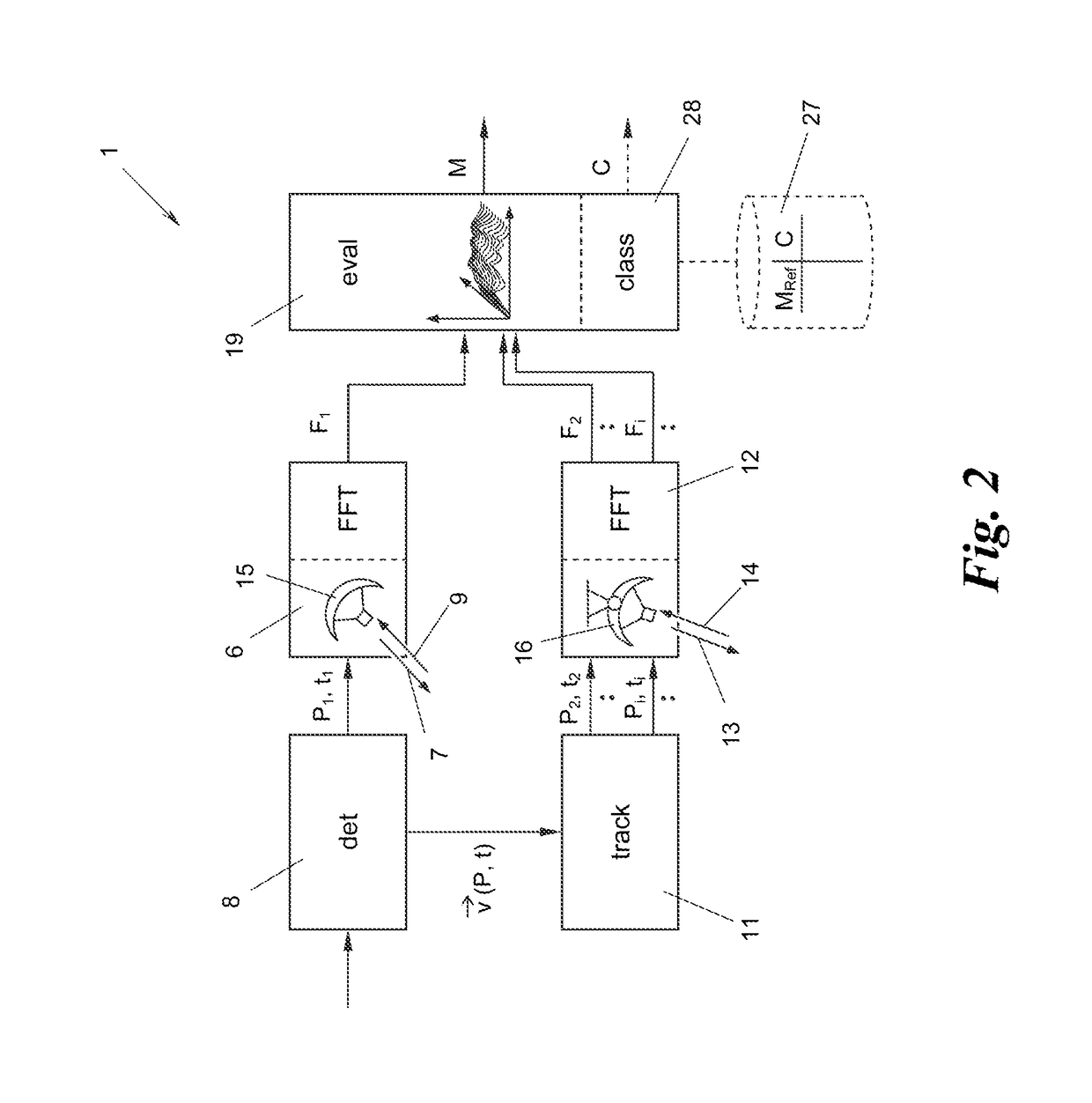Apparatus and method for determining a vehicle feature
a vehicle feature and applicator technology, applied in the direction of instruments, measurement devices, using reradiation, etc., can solve the problems of high computing effort and limited measurement accuracy of such radar systems, and achieve the effects of less maintenance, less susceptible to failure, and simple method
- Summary
- Abstract
- Description
- Claims
- Application Information
AI Technical Summary
Benefits of technology
Problems solved by technology
Method used
Image
Examples
Embodiment Construction
[0038]FIGS. 1 and 2 show an apparatus 1 for determining a characteristic feature M of a vehicle 2, which travels at a speed v along a movement vector 3 in the direction of travel 4 of a roadway 5. A first radar sensor 6 of the apparatus 1 transmits a first radar beam 7, which is directed towards a current location P1 at which the vehicle 2 is detected by a detector 8. The first radar beam 7 is reflected at least in part by the vehicle 2. The first radar sensor 6 then receives a first radar beam 9 reflected on the vehicle 2 and determines a first frequency spectrum F1 thereof in a manner known to a person skilled in the art, for example by means of fast Fourier transformation (FFT).
[0039]The detector 8 detects not only a vehicle 2 at a current location P1 at a current time t1, but also measures the movement vector 3 of the vehicle 2, more specifically before, simultaneously with, or after the transmission of the first radar beam 7. To this end, the detector 8, for example at a curren...
PUM
 Login to View More
Login to View More Abstract
Description
Claims
Application Information
 Login to View More
Login to View More - R&D
- Intellectual Property
- Life Sciences
- Materials
- Tech Scout
- Unparalleled Data Quality
- Higher Quality Content
- 60% Fewer Hallucinations
Browse by: Latest US Patents, China's latest patents, Technical Efficacy Thesaurus, Application Domain, Technology Topic, Popular Technical Reports.
© 2025 PatSnap. All rights reserved.Legal|Privacy policy|Modern Slavery Act Transparency Statement|Sitemap|About US| Contact US: help@patsnap.com



